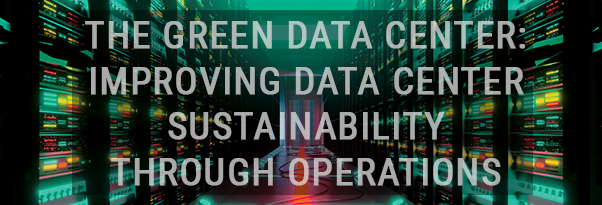
By Lee Kirby
Sustainability is now a top-of-mind issue in data center management, as data centers consume an estimated 200 terawatt hours (TWh) each year. With digital transformation, the rise of human-induced climate change is at an all-time high and the growth of connected device workloads is only growing more. It must be our global imperative to focus on energy efficiency and reduce the carbon footprint. In the quest to make your data center more ‘green’, we share some solid strategies to help data centers more efficiently transition to more sustainable practices as an industry worldwide.
MAKING AN IMPACT THROUGH SUSTAINABLE DATA CENTER OPERATIONS
Salute Mission Critical, a global data center services company, shares an efficient delivery model that uses fewer people, optimizes processes and with fully integrated technology, can be a key solution to the increasing sustainability issue. In short, Salute helps data centers efficiently transition to more sustainable practices for the world’s most sophisticated hyperscalers, colo providers and edge operators. With that experience, Salute has perfected a model to optimize operations, reduce operating expenses, and minimize risk. The advantage of this model has an enormous commercial impact through enhanced cost savings and a societal impact through reduced energy consumption.
STEP 1: 3 TIERED RESPONSIBILITIES FRAMEWORK
The Responsibilities Framework below is the starting point to understanding and implementing a program that will drive positive outcomes.
The key to success for sustainable operations is to define the partnership responsibilities between the various stakeholders. Once established, the transformation begins. Below are the steps to becoming a sustainable operator.
STEP 2: A HOLISTIC APPROACH TO BECOMING A GREEN DATA CENTER
The key to taking a holistic approach is one that encompasses the life cycle of the data center and manages all systems, processes, and teams as an integrated ecosystem. An ecosystem that includes these elements:
Remember, the data center companies leading the sustainability charge will bring these benefits to their customers first. Pioneering new sustainable strategies can be a competitive advantage and lower the costs for data centers and customers alike, all the while impacting the environment for future generations. Embracing change and optimizing traditional standards is critical for making the ethical impacts needed to turn the current trajectory around. It is up to us and if you do it right, sustainable operations can drive bottom-line results that will have a long-term economic and social benefit.
Lee Kirby is Co-Founder and Chairman of Salute Mission Critical. He can be reached at [email protected].